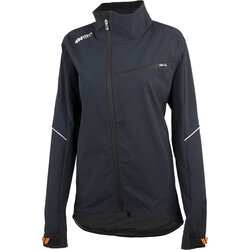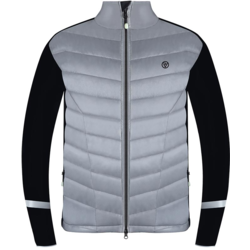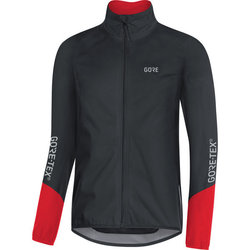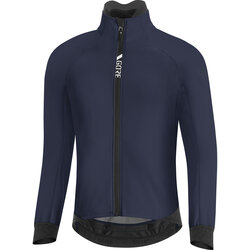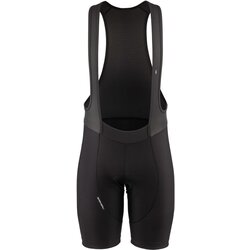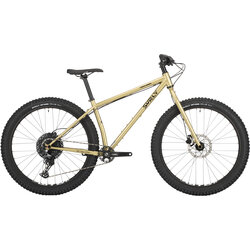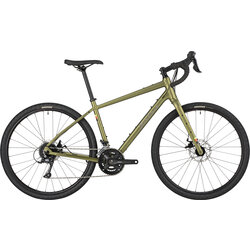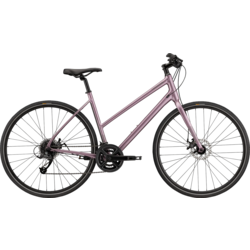Winter Cycling Gear Guide


By: Matt Donovan,
3rd generation Owner and General Manager of Dedham Bike
Last updated: 1/20//24
How To Stay Warm Cycling In Winter?
Biking in the winter months is huge fun, especially when the white stuff falls and you are chomping at the bit to get some fresh air.
So, you want to ride your bike outside this winter but aren't sure what winter clothing you'll need to be warm and dry? Read on and we'll give you a hand.
Selecting and wearing the right winter cycling gear and bicycle is the key to staying comfy, warm and safe when the temps really drop.
We've made some solid suggestions on how to dress for the cooler temps and snow that the season brings.
Follow our suggestions and then dress in layers, with heavier outer layers for rain, snow or high winds. Keep in mind that fat tires, steep hills and soft surfaces slow you off road, resulting in less wind-chill. So, for off-road riding, wear slightly lighter clothing, and be prepared for colder temps on open roads and descents by carrying a vest or jacket. In a nutshell, winter cycling layers make a huge difference!
These suggestion will work great for winter bike commuting as well, it works on the same ideas as any other riding situations.
We've also included a suggested winter bike section as as part of this guide in case you're in the market for a great winter bike.
If you still have questions on how to gear up for cold weather and winter cycling just swing by Dedham Bike and we'll get you set up properly.
What to wear mountain biking in the cold?
Well, whether you're riding in the woods or riding on the road the ideas will be similar with a leaning towards more wind breaking materials in your gear for the road where the speeds tend to be higher.
How to dress for winter cycling based on temperature
60 and Below - Think Early Fall & Early Spring
For this temperature range you want light protection that packs easily and/or unzips to let excess heat out. Start with the base layer — an essential piece for all cool-weather exercising. This light, thin undershirt wicks to keep you dry, warm and comfortable so you never catch a chill.
Arm, Leg and knee warmers add protection for your limbs with a cozy layer of warmth, which also helps prevent injuries that can come from exposing the joints to the cold. Warmers are easy to pull on and off, and pack, so they're ideal if you're unsure about the weather or if you’re climbing and descending a lot.
Long sleeve jerseys are perfect for consistent cool or cold temperatures. Their combination of technical wicking, breathability and insulation makes them an excellent outer or inner layer. And if you tend to heat up significantly on your rides, get a jersey with a long or full zipper so you can get enough ventilation when needed.
Wind vests keep your core warm as you slice through chill winds thanks to technical wind-proof material that blocks cold blasts and breathes for ventilation, too. These vests are small and lightweight, too, so you can stuff them in a hydration pack or jersey pocket as the temperature or weather change. Plus, they often sport reflective accents for safety, a nice feature on dark, stormy days.
The speed of cycling can cause the wind to nip at your fingers and ears. Full finger gloves block the it and keep the fingers warm. Plus, the padded palms make them ideal for on- or off-road riding. And, they usually include terry panels great for wiping your face and nose. And don’t forget an ear-warming headband that easily fits into your pocket and can save you on a long, chilly descent.
50 and Below - Mid Fall & Late Winter
At these temperatures you need more protection. For example, frozen feet can ruin a ride quickly. Wool socks, which are warm when dry or wet, are perfect for winter warriors. They're not only incredibly warm and breathable, but they wick to keep you dry, too. For your upper body, a light jacket is great for cool and changing weather. Jackets provide wind protection, breathability and water-resistant or waterproof fabric. Plus they're easy to get on and off, stow easily in a jersey pocket and are form fitting to not catch the wind.
Lightweight Lycra tights are another piece perfect for just about any outdoor activity. Thin and durable, they protect your skin from the wind and elements while never overheating you on 'tweener days. Plus, a form fit means you won't have to worry about fabric tangling with bike parts or impeding you whether you're riding, running or skiing.
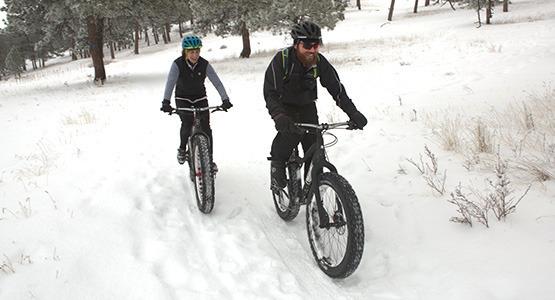
Keep That Core Warm
Winter cycling apparel keeps your body temperature high while staying breathable so that you can ride hard and stay comfortable.
From light windbreakers to heavy-duty waterproof coats, we have you covered. Don't let the weather get in the way of a great ride.
Plus, keep that core warm help to avoid hunter's reflex.
This is where your hands get very cold at the start of a ride because your blood goes to your core for warmth.
40 and Below - Now We're Getting Colder
As it starts to get even colder, it’s important to protect your head, hands and toes even more aggressively. There's nothing like a warm hat, booties, and lined gloves to keep Old Man Winter at bay.
We have helmet-friendly hats that provide essential moisture management for your dome. And lined gloves ready to take on the vicious combination of cold, wet and wind-chill that ends many rides. They boast a water-and wind-resistant outer layer with a warm, wicking removable liner (for easy washing). Plus the flexible, five-finger design prevents numb digits without bulk that would hamper shifting and braking. You'll also want booties that slip over your cycling shoes to block the wind, water and frigid temps too. The soles are built to last and have cutouts for your cycling shoe cleats too.
Up top, maximize your layering power with a warm fleece-lined vest. Like their lighter wind-stopping cousins, these block breezes but with heavier fabric and a cozy fleece lining for moisture transfer and maximum comfort when temperatures drop.
Look at all-weather jackets and rain pants for more protection. With water resistance, wind proofing and toasty warmth, they are just the thing to keep you commuting and training strong all winter. Features, such as sealed seams, shockcord bottoms, weatherproof collars and extended cuffs keep you comfy. Plus, breathable materials, fleece lining and dexterity-friendly designs make these jackets and pants just right for much of your winter riding.

Dress Right For Winter Cycling. Layers Are A Must For Best Comfort.
A good long sleeve jersey keeps you warm and mobile in all conditions.
If you're riding in the middle of the day and it's a little too warm for a jacket, the jersey acts as a second layer and has you covered.
Or wear the jersey with the jacket and shed it if things warm up. Stay warm and dry no matter how the sun decides to behave.
30 and Below - Buurrrrr!
When the temperatures drop below freezing, it’s really time to bundle up. And balaclavas are essential for all-season cyclists. They offer complete head, neck and lower face coverage and protect your lungs from cough-causing cold by warming your breath.
To add to the layers a good baselayer is also a solid add on here, once we dip below freezing layers become even more important than ever.
For the torso, a thermal jacket is like having your own heater. Its outer shell boasts multi-ply laminate for complete immunity from the wind, water and cold. Inside there's a breathable membrane and comfortable fleece to keep you warm and dry. And you'll love a pair of thermal tights when it's freezing out. The fronts are covered in wind-resistant fabric while the backs offer comfortable ventilation. The thermal-fleece fabric next to your skin makes you feel as if you were sitting in front of a fireplace.
Winter riding boots or shoes are a great addition over and above shoes covers as they are intended solely for the deep cold and don't require any addtional coverings to do their job. We are big fans of 45NRTH winter gear and apparel for their dedication to winter riding add-ons.
Another great add on when things really dip below freezing are pogies or handlebar mitts. These add an extra wind protecting and cold protecting barrier over your hands by attaching to your handlebars. Think of them as a "garage for your hands".
Stop by the shop today and get prepared to bicycle in all weather!
Browse Our Suggested Winter Bikes
These are some of our suggestions for the best winter bikes for you to consider. In a nutshell there really is no "best winter bike", the best option is what works best for your intended use. Think about things like fender capability, frame clearance, disc brakes etc. These are things that will set a good winter capable bike apart from other less snow capable bicycles.




